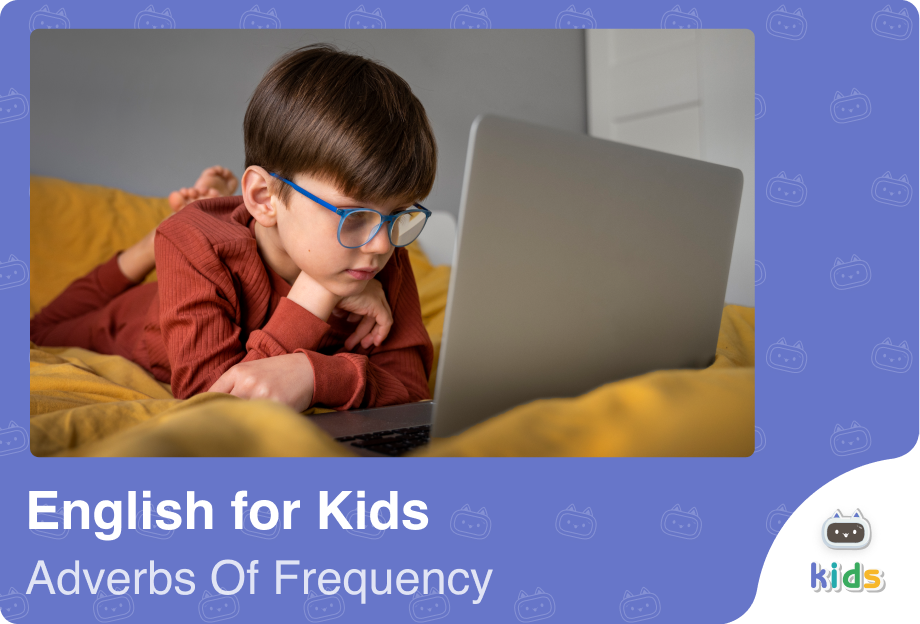Have you ever found yourself in a state of happiness, sadness, excitement, or anger? These are feelings and emotions. When things happen around us, such as receiving a present or figuring something out, we experience emotions inside our bodies. In this blog, we will learn about different kinds of feelings and emotions, as well as the English words to express them. You will learn how to express emotions, ask others about their emotions, and gain a better understanding of emotions. Let’s explore the world of emotions together!
Learn English with EnglishCentral Kids
Would you like to take your child’s learning journey further? EnglishCentral Kids provides a fun and successful education with 25 minute one-on-one lessons for all ages and levels, along with lesson reports afterwards. There are fun and educational video lessons for your child to explore, and an AI tutor MiMi that will help your child with their English learning journey. Quizzes, interactive activities and entertaining vocabulary learning tools are gathered all on one platform and tailored according to your child’s level and needs.
Sign up to EnglishCentral Kids today for your child, keep learning and practicing!
Emotions and Feelings Vocabulary
These are some common expressions we use to describe our feelings and emotions:
| Happy | Sad |
| Calm | Angry |
| Brave | Fear |
| Energetic | Tired |
| Optimistic | Pessimistic |
| Confident | Shy |
| Kind | Nervous |
| Cheerful | Worried |
| Curious | Scared |
| Proud | Bored |
| Grateful | Miserable |
| Embarrassed | Disappointed |
| Overwhelmed | Jealous |
| Amused | Mad |
| Cherished | Disgusted |
| Surprised | Shocked |
| Excited | Anxious |
| Confused | Upset |
| Successful | Suspicious |
| Love | Hate |
| Good | Bad |
Talking About Emotions
The topic of feelings and emotions is a great way to practice English as they are a key part of our everyday lives. Throughout the day, we experience a range of emotions, including happiness, anger, surprise, or fear. Having the ability to communicate about these emotions can help us connect with others. Just like describing the weather or someone’s appearance, we can also use simple words to convey our internal feelings. To make others better understand us, it’s important to express our emotions. Let’s explore some fun and easy ways to talk about our feelings in English!
Questions and Answers About Feelings and Emotions
– How are you?
+ I’m fine, just a little tired.
-How do you feel?
+I feel kind of sad today.
-What are you feeling right now?
+Right now, I feel a little nervous.
-Is everything okay?
+Not really, but I think it will be soon.
-Do you want to talk about it?
+Yes, I think talking might help.
-What’s going on?
+Something happened that made me feel a little upset.
-Why do you look so happy?
+Because something really good happened today!
-You seem a little quiet, are you alright?
+I’m just thinking. I’m okay, just quiet.
-What made you feel that way?
+Someone said something that hurt my feelings.
-Did something happen to make you upset?
+Yes, my friend didn’t want to play with me.
-How can I help you feel better?
+Can you stay with me for a little while?
-Why are you upset?
+I lost my favorite toy and it made me sad.
Frequently Asked Questions About English for Kids – Emotions and Feelings
How do I talk about emotions in English naturally?
To naturally talk about emotions, use simple ‘I feel’ statements like ‘I feel happy’ or ‘I feel nervous’. Include a reason, like ‘I’m excited because it’s my birthday’. To express intensity, use adverbs like ‘very’ or ‘a little’, like ‘I’m very sad’. It is important to learn idioms like ‘I’m over the moon’. To mimic their style, listen to native speakers in movies or conversations.
How can I expand my vocabulary for emotions in English?
Learning synonyms can help you expand your vocabulary, for example by using ‘joyful’ instead of ‘happy’. Create flashcards with new words and their corresponding meanings. Reading books or watching shows is a way to understand how emotions are described. Separate verbs based on their meaning, such as anger (mad, furious) or sadness (blue, heartbroken). Make sure to practice using them in sentences every day.
Why is it important to learn emotions vocabulary in English?
Emotional vocabulary can help you express your feelings more clearly. Conversations with friends or colleagues become easier with this. Through talks, books, or movies, you can gain a better understanding of others. For individuals who are not native speakers, sharing thoughts and connecting with others in English builds confidence.
Why is it important to learn emotions vocabulary in English?
Accurately expressing your emotions is made possible by knowing the vocabulary of emotions. Personal and professional communication is enhanced by it. It helps you understand English media, like songs or stories. For learners, it makes speaking and writing in English more natural and effective.
You can access everything your child needs to learn English on a single platform! With 25-minute live lessons guided by teachers specialized in child education, entertaining and instructive interactive videos designed for child development, vocabulary learning tools, the AI Tutor MiMi, quizzes, and interactive activities, EnglishCentral Kids offers a personalized and quality education plan tailored to your child’s needs at affordable prices. How about registering for EnglishCentral Kids now and starting your child’s English learning journey?











